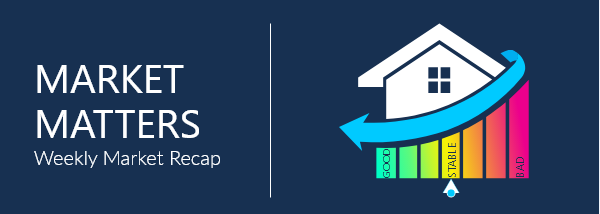Market Matters

A new year with a new trade agreement and an attack on a top foreign military leader…disruptive escalations should continue to support bonds and add pressure to equity markets.
 Pending Home Sales
Pending Home Sales
Pending Home Sales for November posted up +1.2%, right
in-line with market expectations. October’s result was also revised to a better level, up from an original -1.7% to -1.3%. By region, there were gains in November of +1.1% in the Midwest and +.6% in the Northeast; however, both the South and West saw declines of -.2% and -2.1%, respectively. November had 1.64mln homes available for sale, which was the lowest for any November on record.
 Trade Deficit
Trade Deficit
The November trade deficit narrowed to $63.2bln from $66.8bln in October, now posting its third consecutive contraction and the narrowest level since back in October 2016. Goods imports fell by -1.3% to $199.6bln, while exports rose by +.7% to $136.4bln. Within the report we see that the U.S. imported fewer farm, consumer, and industrial goods in November, while we exported more crops, autos, and industrial supplies.
 S&P Case-Shiller Home Prices
S&P Case-Shiller Home Prices
The S&P CoreLogic Case-Shiller 20 City Home Price Index for October rose by +.4% on the month, now posting +2.2% YoY. September’s headline was revised down from an original +.4% to now +.3%. Within the October data, the strongest increases were seen in Los Angeles, Atlanta, and Seattle, which were all up by +.7%. The weakest cities were San Francisco, down by
-.2%, and Detroit, unchanged.
 Consumer Confidence
Consumer Confidence
The Conference Board's Consumer Confidence Index dropped -.3 to 126.5 in December from upwardly revised November print at 126.8 (orig. 125.5). Expectations were for the index to rise to 128.2 in today’s release. Within the report, the present situations index rose to 170 vs. 166.6 in the prior month, while the expectations index fell to 97.4 from 100.3.
 ISM Manufacturing Index
ISM Manufacturing Index
The December ISM Manufacturing Index fell to its lowest level since June 2009, down -.9 to 47.2. This also marks the fifth headline in a row that has posted below the neutral 50 mark. After the announcement of the “Phase One” trade agreement, market expectations were for the headline to rise +.9 to 49.0. Within the report, both new orders and production indices were at their lowest levels since April 2009, down -.4 to 46.8
and -5.9 to 43.2, respectively. Employment also dropped, down -1.5 to 45.1, its weakest levels since January 2016. Out of the 18 manufacturing industries, there were only 2 that improved, that of supplier deliveries (+2.6 to 54.6), and inventories (+1.0 to 46.5). Regarding exports, we see more contraction with a -.6 drop to 47.3, while imports rose +.5 to 48.8, its highest sin

